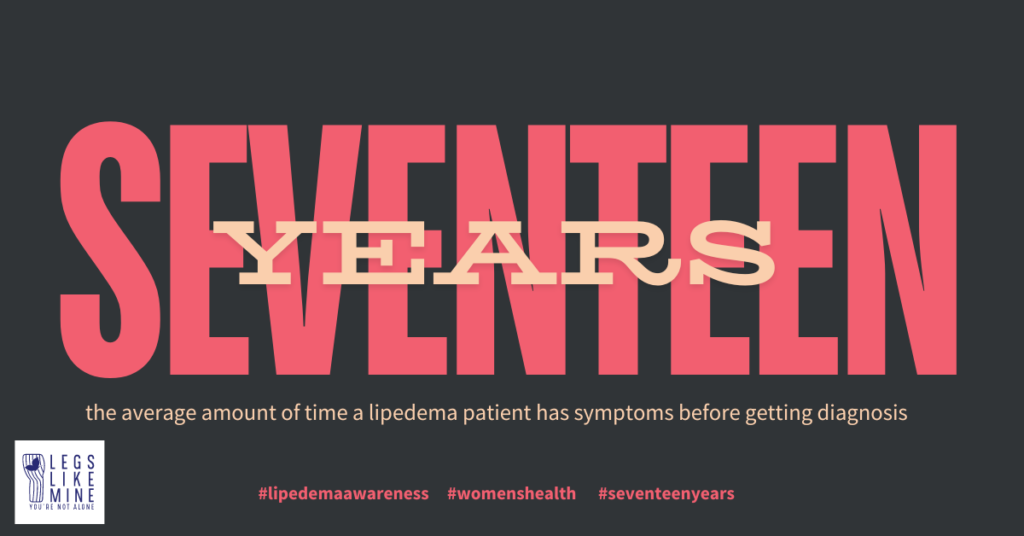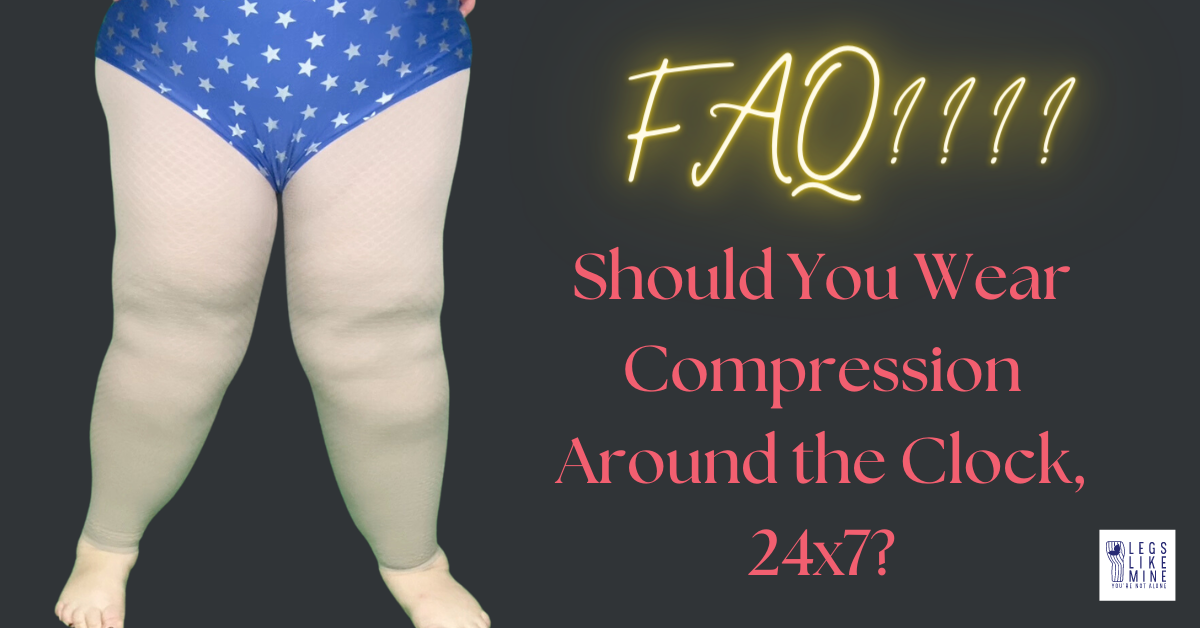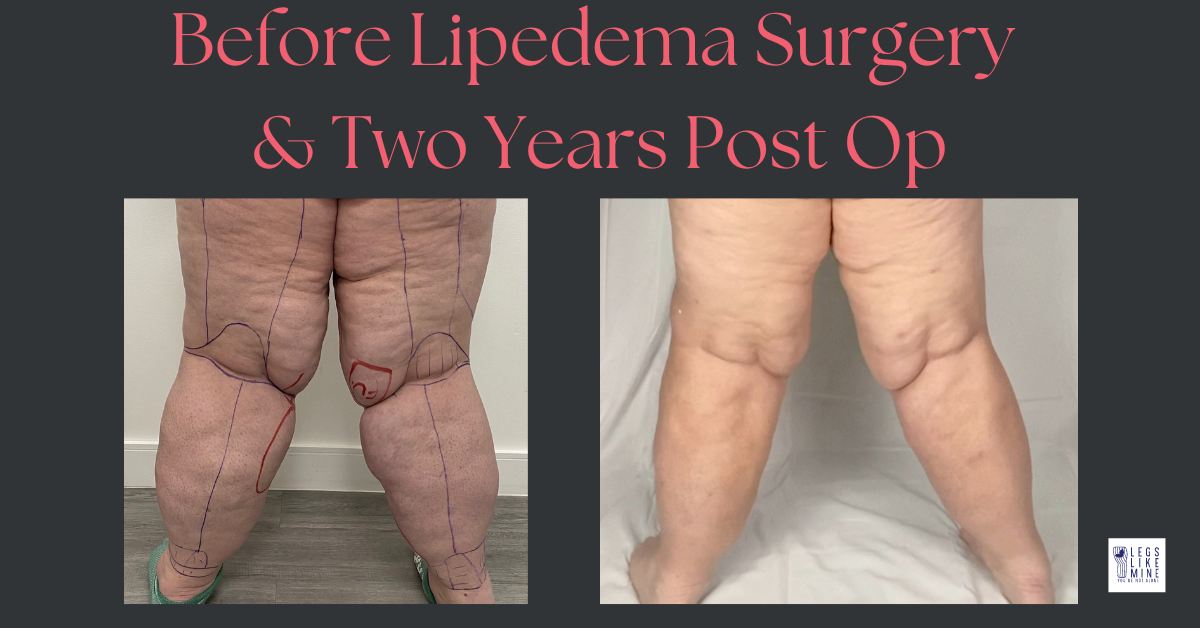Hi friends,
As I prepare for Lipedema Awareness Month, I’ve been reviewing a document called the First Look Report from the Lipedema Foundation. These are findings that the LF discovered as they analyzed the Lipedema Registry Survey. The finding that continues to blow my mind is that women go on average 17 years with symptoms of lipedema before seeking diagnosis.
Imagine experiencing unexplained swelling, pain, and discomfort in your legs for years, only to be met with confusion and misunderstanding from the medical professionals you seek help from. This is the reality for countless women living with lipedema, a chronic condition characterized by an abnormal accumulation of fat in the legs and sometimes arms.
According to the Lipedema Foundation’s “First Look Registry Report,” the average lipedema patient waits a staggering 17 years after first noticing symptoms before receiving an accurate diagnosis. This prolonged diagnostic odyssey is a testament to the lack of awareness and understanding surrounding this condition within the medical community.
The report reveals that while lipedema often manifests during puberty, with peak onset occurring between the ages of 12 and 14, the average age of diagnosis is a startling 48 years old. This means that many women spend decades navigating the healthcare system, enduring misdiagnoses, and struggling with the physical and emotional toll of lipedema without proper guidance or treatment.
The consequences of this delay are far-reaching. Lipedema patients may experience a significant impact on their quality of life, mental health, and overall well-being. The constant pain, swelling, and mobility challenges can lead to feelings of frustration, isolation, and even depression. Additionally, the lack of early intervention can exacerbate the progression of the condition, making it more difficult to manage in later stages.
It is crucial for healthcare professionals to recognize the signs and symptoms of lipedema, as early diagnosis and appropriate treatment can significantly improve patient outcomes. Increased awareness and education within the medical community are essential steps towards addressing this diagnostic delay. An excellent resource for clinicians who may be unfamiliar with lipedema diagnostic criteria can be found on the Lipedema Foundation website, and is linked here: Clinician’s Guide to Lipedema — Lipedema Foundation.
By shedding light on the diagnostic odyssey faced by lipedema patients, we can raise awareness, encourage open dialogues, and ultimately work towards a future where women with lipedema receive timely and accurate diagnoses, enabling them to access the care and support they deserve.
Let’s all join forces in advocating for lipedema awareness, empowering patients, and supporting the medical community in their efforts to better understand and address this often-overlooked condition. And then let’s brainstorm who else needs to know and who else we can tell. I have a few ideas that I’ll be sharing with you over the next month.
Stay tuned, friends! The month is just beginning. Seventeen years is unacceptable. Let’s change that.
Susan












